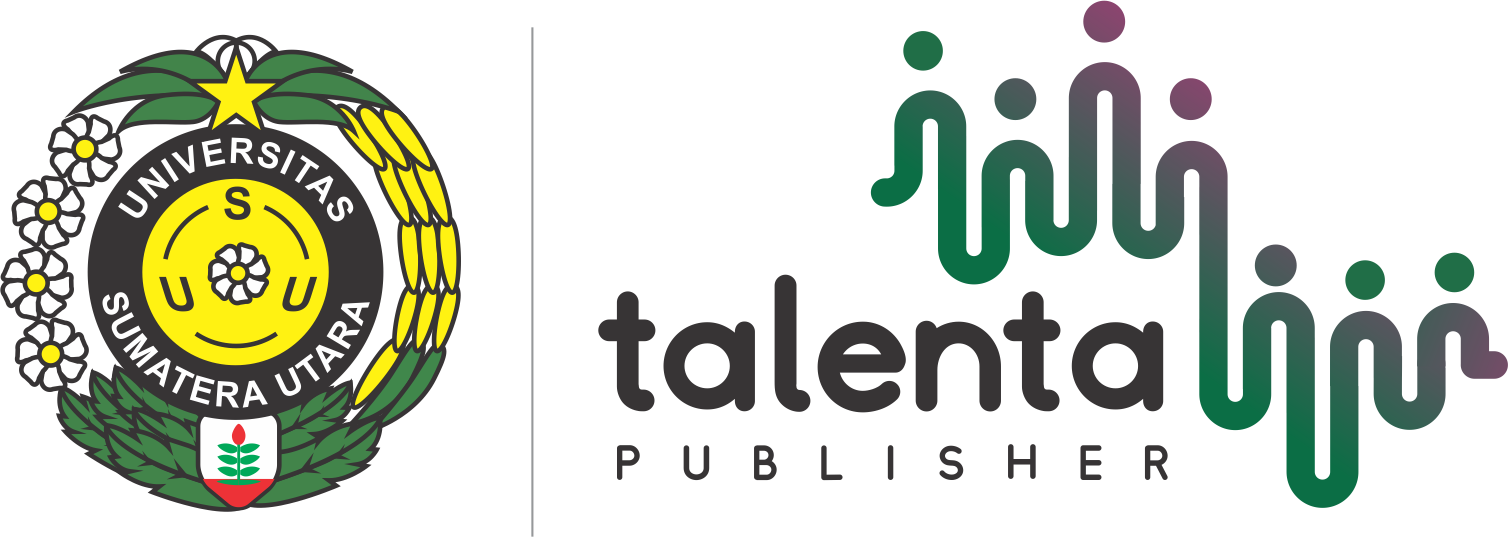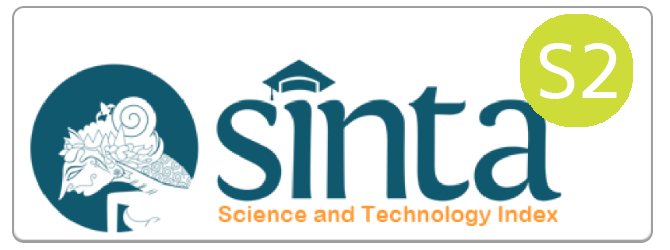Economy and banking sector performance: Spillover effect of Uncertainty of Covid-19 on Non-performing loans of Turkish Agricultural sector
DOI:
https://doi.org/10.32734/jocai.v9.i1-19905Keywords:
Non-Performing Loans, Covid-19; VAR model, forecast error variance, TurkeyAbstract
This spillover index research paper tries to find connectedness between Non-performing loans (NPL) and Covid-19 global pandemic specifically in the Turkish agricultural sector. The research covers variables of NPL, Geopolitical risk index (GPR), Fishing, Agriculture, Non-performing loans to total assets (NPL_TCL), Return on assets (ROA), Return on equity (ROE). The data for this research includes a monthly time series dataset covering between Dec. 2004–April 2020. To perform the statistical analysis descriptive statistics, correlation matrix with its T-statistics and probabilities, and Dielbold and Yilmaz index were adopted to uncover the level of connectedness among the group. The descriptive statistics results of the group reveal that all variables understudy were contributing factors to the increase of NPL of the banking sector in general. Specifically, the agricultural sector’s NPL has a significant effect on the banking sector’s aggregate NPLs. The correlation analysis indicated that there is a higher correlation between NPL and agriculture, Fishing, Timber, and a moderate average correlation between NPL and Hunting. Similarly, a moderate high correlation amongst individual agricultural sectors i.e. Hunting, Fishing, Agriculture, Timber and as well as higher correlation between ROA and ROE that are under consideration. This shows that there is somehow acceptable interconnectedness among the group. The results of the spillover index effects through Dielbold and Yilmaz procedure revealed a total spillover effect 57.3%. Whereas, another unexplained effect in this study is 43.7% which might be as a result random noise in the dataset due to impact of Covid-19 pandemic. This research is significant as it is first of its kind on a proof of spillover from the empirical viewpoints as it related to Turkey on level of spillover and its impacts on the NPLs of the banking sector measuring the agricultural sector’s contribution.
Downloads
References
P. L. Leoni, “HIV/AIDS and banking stability in developing countries. Bulletin of Economic Research, vol. 65, no. 3, pp. 225–237, 2013.
T. Lagoarde-Segot, P. L. Leoni, “Pandemics of the poor and the bank stability”. Journal of Banking and Finance, vol. 37, pp. 4574–4583.
B. Bernanke, “Nonmonetary effects of the financial crisis in propagation of the Great Depression”, American Economic Review, vol. 73, pp. 257–276, 1983.
A. Demirguc-Kunt, E. Detragiache, P. Gupta, “Inside the crisis: An empirical analysis of banking systems in distress”, Journal of International Money and Finance, vol. 25, pp. 702–718, 2006.
M. Karadima, H. Louri, “Economic policy uncertainty and non-performing loans: The moderating role of bank concentration”, Finance Research Letters, in press.
S. Hu, D. Gong, “Economic policy uncertainty, prudential regulation and bank lending”, Finance Research Letters, vol. 29, pp. 373–378.
M. Caglayan, B. Xu, “Economic policy uncertainty effects on credit and stability of financial institutions”, Bulletin of Economic Research, vol. 71, no. 3, pp. 342–347, 2015.
Q. Chi, W. Li, “Economic policy uncertainty, credit risks and banks’ lending decisions: evidence from Chinese commercial banks”, China Journal of Accounting Research, vol.10, pp. 33–50, 2017.
W. R. Keeton, C. S. Morris, “Why do banks’ loan losses differ. Economic review”, vol. 72, no. 5, pp. 3-21, 1987.
R. Rajan, S. C. Dhal, “Non-performing loans and terms of credit of public sector banks in India: An empirical assessment”, Reserve Bank of India Occasional Papers, vol. 24, no. 3, pp. 81–121, 2003.
H. L. Fofack, “Nonperforming loans in Sub-Saharan Africa: causal analysis and macroeconomic implications”, The World Bank, 2005.
L. Rinaldi, A. Sanchis-Arellano, “Household debt sustainability: What explains household non-performing loans? An empirical analysis”, 2006.
G. Jimenez, V. Salas, J. Saurina, “Determinants of collateral. Journal of financial economics”, vol. 81, no. 2, pp. 255–281, 2006.
T. O. Berge, K. G. Boye, “An analysis of bank’s problem loans”. Norges Bank Economic Bulletin, vol. 78, pp. 65–76, 2007.
M. Bofondi and T. Ropele, “Macroeconomic determinants of bad loans: evidence from Italian banks”, Bank of Italy Occasional Paper, vol. 89, 2011.
M. Nkusu, “Nonperforming Loans and Macrofinancial Vulnerabilities in Advanced Economies”, IMF Working Paper, pp. 1–27, 2012.
N. Klein, “Non-Performing Loans in CESEE: Determinants ve Impact on Macroeconomic Performance”, IMF Working Paper, WP/13/72, 1-27.
A. N. Berger, R. De Young, “Problem loans and cost efficiency in commercial banks”, Journal of Banking and Finance, vol. 21, pp. 849–70, 1997.
V. Salas, J. Saurina, “Credit risk in two institutional regimes: Spanish commercial and savings banks. Journal of Financial Services Research, vol. 22, no. 3, 203–224, 2002.
C. J. Godlewski, “Capital regulation and credit risk taking: Empirical evidence from banks in emerging market economies”, Available at SSRN 588163, 2004.
T. García-Marco, M. D. Robles-Fernandez, “Risk-taking behaviour and ownership in the banking industry: The Spanish evidence”, Journal of economics and business, vol. 60, no. 4, pp. 332–354, 2008.
D. P. Louzis, A. T. Vouldis, V. L. Metaxas, “Macroeconomic and bank-specific determinants of non-performing loans in Greece: A comparative study of mortgage, business and consumer loan portfolios”, Journal of Banking & Finance, vol. 36, no. 4, pp. 1012–1027, 2012.
A. Ghosh, “Banking-industry specific and regional economic determinants on non-performing loans: Evidence from US states”, Journal of financial stability, vol. 20, pp. 93–104, 2015.
Dimitrios, Anastasiou, Helen, Louri, Mike, Tsionas, "Determinants of non-performing loans: Evidence from Euro-area countries", Finance Research Letters, Elsevier, vol. 18, pp. 116-119, 2016.
S. Bardhan, V. Mukherjee, “Bank-specific determinants of nonperforming assets of Indian banks”, International Economics and Economic Policy, vol .13, no. 3, pp. 483–498, 2016.
C. Schinckus, “Economic uncertainty and econophysics”, Physica A: Statistical Mechanics and its Applications, vol. 388, no. 20, pp. 4415-4423, 2009.
D. Rodrik, “Policy uncertainty and private investment in developing countries”, Journal of Development Economics, vol. 36, pp. 229-243, 1991.
S. R. Baker and N. Bloom, “Does uncertainty reduce growth? Using disasters as natural experiments” (No. w19475). National Bureau of Economic Research, 2013. https://www.nber.org/papers/w19475
B. Born, J. Pfeifer, “Policy risk and the business cycle”, Journal of Monetary Economics, vol. 68, pp. 68–85, 2016.
C. Buch, M. Buchholz, L. Tonzer, “Uncertainty, bank lending, and bank-level heterogeneity”, IMF Econ Rev, vol. 6, no. 4, pp. 919–954, 2015.
M. Bordo, J. Duca, C. Koch, “Economic policy uncertainty and the credit channel: aggregate and bank level U.S. evidence over several decades”. J. Financ. Stab. vol. 26, pp. 90–106, 2016.
Z. He, J. Niu,”The effect of economic policy uncertainty on bank valuations”, Applied economics letters, vol. 25, no. 5, pp. 345–347, 2020.
A. N. Berger, O. Guedhami, H. H. Kim, X. Li, “Economic policy uncertainty and bank liquidity creation”, 2018. Available at SSRN: https://ssrn.com/abstract=3030489.
M. Dzielinski, “Measuring economic uncertainty and its impact on the stock market”, Financ. Res. Lett. vol. 9, no.3, pp. 167–175, 2016.
M. Arouri, C. Estay, C. Rault, D. Roubaud, “Economic policy uncertainty and stock markets: Long-run evidence from the US”. Finance Research Letters, vol. 18, pp. 136–141, 2019.
M. Ulrich, “Economic policy uncertainty & asset price volatility". Available at SSRN 1566909.
S. R. Baker, N. Bloom, J. Davis, “Measuring economic policy uncertainty”. The quarterly journal of economics, vol. 131, no. 4, pp. 1593–1636, 2016.
M. Bicchal and S. R. S. Durai, “Assessing Macroeconomic Uncertainties for an Emerging Economy”, 2020.
J. Podpiera, L. Weill, "Bad Luck or Bad Management? Emerging Banking Market Experience", Journal of Financial Stability, vol. 4, pp. 135–148, 2008.
H. Ahir, N. Bloom, D. Furceri, "The world uncertainty index." Available at SSRN 3275033 (2018). (this is the Chicago version) It’s from the website https://papers.ssrn.com/sol3/papers.cfm?abstract_id=3275033.
G. Gozgor, E. Demir, J. Belas, S. Yesilyurt, “Does economic uncertainty affect domestic credits? an empirical investigation”, Journal of International Financial Markets, Institutions and Money, vol. 63, 101147, 2019.
U. Akcay, A. R.Gungen. 2019. The making of Turkey’s 2018-2019 economic crisis. Working paper, 120/2019, Retrieved June 27, 2020 https://www.econstor.eu/bitstream/10419/200182/1/1667890263.pdf
N. Bloom, “The impact of uncertainty shocks. Econometrica, vol. 77, no. 3, pp. 623–685, 2020.
Downloads
Published
How to Cite
Issue
Section
License
Copyright (c) 2025 Data Science: Journal of Computing and Applied Informatics

This work is licensed under a Creative Commons Attribution-ShareAlike 4.0 International License.
The Authors submitting a manuscript do so on the understanding that if accepted for publication, copyright of the article shall be assigned to Data Science: Journal of Informatics Technology and Computer Science (JoCAI) and Faculty of Computer Science and Information Technology as well as TALENTA Publisher Universitas Sumatera Utara as publisher of the journal.
Copyright encompasses exclusive rights to reproduce and deliver the article in all form and media. The reproduction of any part of this journal, its storage in databases and its transmission by any form or media, will be allowed only with a written permission fromData Science: Journal of Informatics Technology and Computer Science (JoCAI).
The Copyright Transfer Form can be downloaded here.
The copyright form should be signed originally and sent to the Editorial Office in the form of original mail or scanned document.











